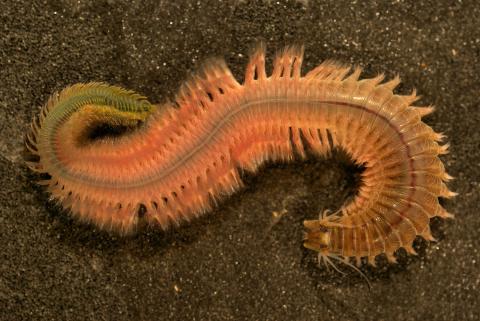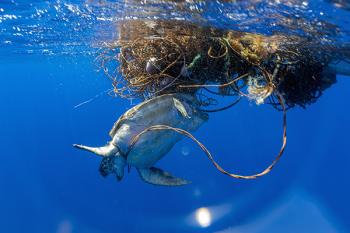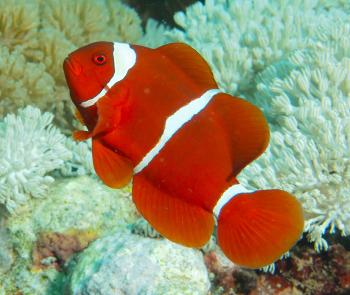
Clam worms (also known as pile, rag or mussel worms) are Polychaete worms, classic annelid marine worms. Polychaetes have bristles (known as chaetae) on the paddle-like extensions on either side of most of their segments, called parapodia. Parapodium is a Greek word which translates into para beside + podia feet.
Clam Worms use their body segments (parapodia) in locomotion, to move and burrow into sand and mud. These segments are also used for respiration and sensing the environment. The parapodia are covered in sensory bristles that can “taste” chemicals in the water and sense current changes and act as feelers.
The worms can be 15-30 centimeters (4-11 inches) long, and about one centimeter wide (.40 inches) with up to 160 segments. Some say they look like a cross between an earthworm and a centipede. Look closely at a clam worm and you will see a head with four eyes, two bulbous palps in front of the eyes, one pair of frontal antennae, and four pair of longer tentacles. The worms use those tentacles for grasping or grabbing.
Ranging from Alaska to California, clam worms seem to be everywhere: under rocks in tidepools, among mussels and barnacles; burrowed in sediment; in seagrass beds; around wharf pilings; and even free-swimming along mud flats. This worm is probably the most abundant of the segmented worms in estuaries.
When eating, the clam worms evert (turn inside out) their pharynx, exposing their two, powerful pincer-like jaws with numerous small teeth. They use those teeth to feed on seaweed and small worms. The worms may be familiar as they are often used as fish bait.
Clam worms swarm at the surface en masse to spawn. Scientists think swarming is triggered by temperature, salinity, photoperiod, and lunar cycle. They commonly swarm at night in moonlight or near artificial lights. Spawning starts in the spring and may continue into summer. After reproduction, the worms die. “These creatures transformed by desire from crawling bottom-dwellers into swimmers, turning a pale green as their body cavities fill with eggs, desperately swimming up to the surface where they reproduce and die.”
















